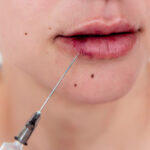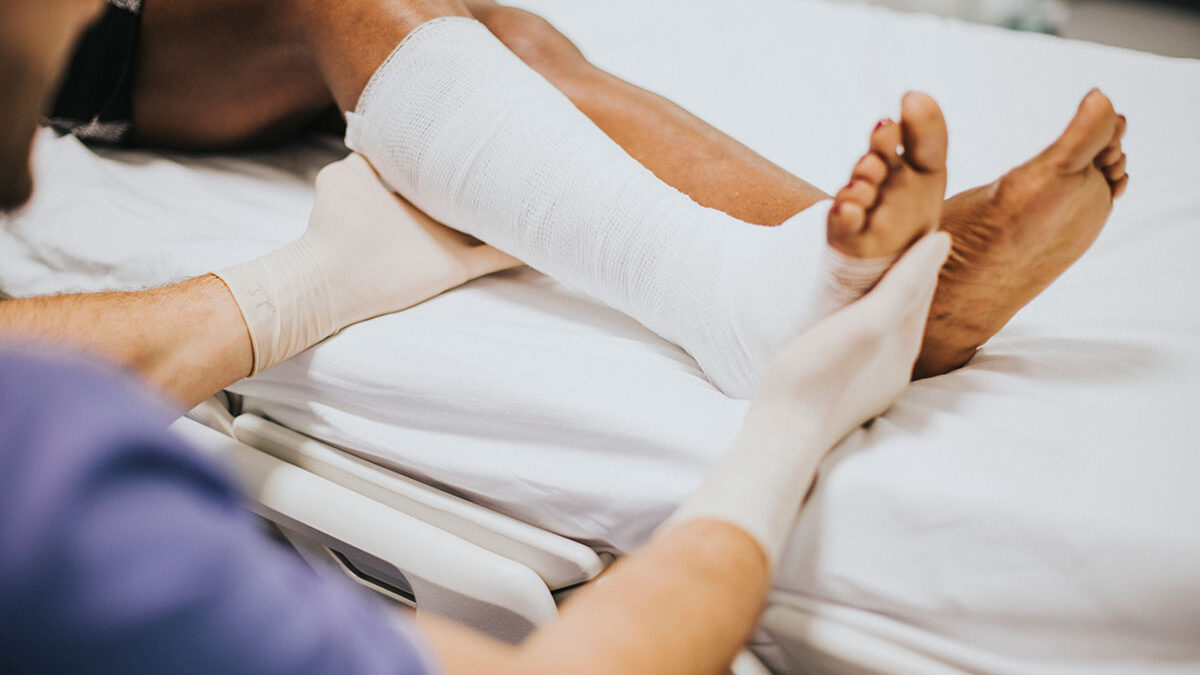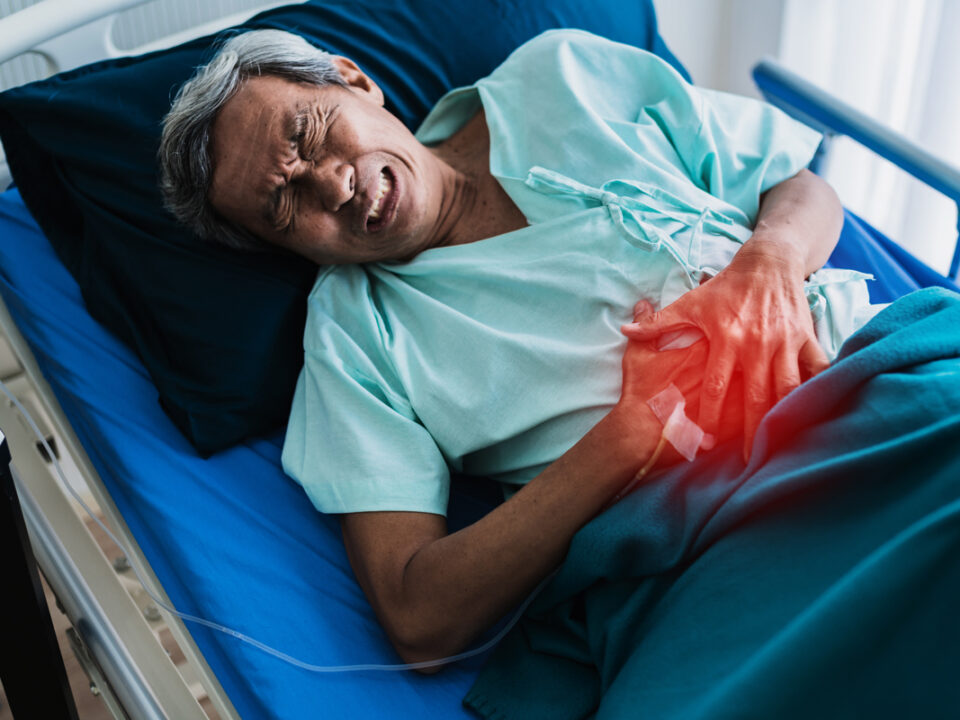
Role of HBOT in Managing Vascular Occlusion Caused Due to Fillers
27/06/2024
Role of HBOT in Sensorineural Hearing Loss
26/07/2024Hyperbaric Oxygen Therapy (HBOT) offers a regulated setting where patients breathe 100% oxygen at pressures greater than atmospheric levels, which significantly improves the healing of surgical wounds. This treatment increases tissue oxygenation, which is essential for the healing of wounds. The increased availability of oxygen promotes white blood cell efficacy in the fight against infections, decreases inflammation, and speeds up cellular regeneration and repair. Additionally, HBOT encourages the growth of new blood vessels, which enhances the blood supply to the injured area and speeds up the healing process. Hyperbaric Oxygen Therapy provides a useful adjuvant treatment for maximizing surgical results since it addresses both the direct and indirect elements involved in wound healing. This is what HBOT India has to say.
Hyperbaric Oxygen Therapy has a lot of potential benefits for several health complications. It includes intake of 100% oxygen at a pressure of more than 1 ATA. HBOT was first used in 1937 to treat decompression sickness and later to treat cancer patients for radiotherapy-induced damage. In 1956, the first heart surgery was performed in a Hyperbaric Chamber. Till now, there have been 132 reported documents for HBOT use. It has been used in several health areas, including stroke, senility, multiple sclerosis, brain and head injuries, migraine, glaucoma, and chronic fatigue.
The frequently used HBOT chambers are multi-place and mono place. Multi-place chamber deals with several patients at once, while a mono place chamber is designed for one patient only. Multi place Hyperbaric Chambers consist of masks or hoods to deliver oxygen to critical patients. Mono place chambers are transparent and acrylic. It does not consist of masks or hoods because it is directly pressurized by oxygen where the patient resides. Mainly, the pressure is increased to 2 or 3 ATA for 60 to 90 minutes. The number of sessions depends upon the illness, i.e., 3-5 sessions for acute illness and 50-60 sessions for radiation patients.
Hyperbaric Oxygen and Wound Healing
Hyperbaric Oxygen Treatment depends upon two mechanisms of action. First is hyper-oxygenation and second is reduced bubble size. Hyper-oxygenation works on the principle of Henry’s law. Based upon this principle, the increased oxygen dissolves in the plasma due to increased partial pressure. Reduced bubble size is based on Boyle’s law. Its principle is a reduction in bubble size by increasing pressure.
Why Surgical Wounds Don’t Heal Properly?
Psychological and physical stress impairs wound healing, as studies have confirmed poor wound healing in Alzheimer’s patients. It is due to the activation of stress-induced cytokines, growth factor expression, and an increased number of bacteria in wounds. At the wound site, there is increased peroxide production by consuming oxygen compared to surrounding cells. These oxygen-depriving cells have greater demand for oxygen and impaired blood vessels. The sympathetic nervous system also promotes the production of hormones known as chatelaines which contribute to alteration in blood flow. The activation of vast-constrictive response also causes hindrance of oxygen supply to damaged tissues.
Role of Oxygen Improving Wound Healing
Oxygen supply favors the healing process, collagen production, pathogenesis, and activating leukocytes. The availability of oxygen affects the wound healing rate. That’s why Hyperbaric Oxygen Therapy has a significant therapeutic aspect due to the increased oxygen supply. Hyperbaric Oxygen Therapy works safely and speeds up the body’s recovery period within a week of surgical procedure by up to 75%. It favors wounds healing by
- Reducing bruising, edema, and inflammation to a minimum
- Getting rid of pain after surgery without taking painkillers
- Boosting the body’s own natural protections against bacteria and infections
How Can HBOT Treat Surgical Wounds?
Wound categories are:
- Chronic non-healing wounds
- Thermal burns
- Traumatic wounds
- Compromised skin grafts
- Radiation wounds
- Other post-surgical wounds
Non-healing Wounds
Non-healing wounds, along with adequate management, refer to injuries that cannot heal within an accurate time limit. Hypoxia conditions develop at the wound site, and HBOT becomes an effective treatment due to an excess oxygen supply in such a situation. HBOT improves pathogenesis through multiple steps. For pathogenesis to occur, collagen is essential. An excessive supply of oxygen promotes fibro-blast proliferation and collagen production. HBOT also initiates growth factors and improves the immune system by increasing antimicrobial properties. It also reduces edema, which permits better oxygen diffusion and reduces pressure on the adjacent vessels and tissues.
Some common non-healing wounds include diabetic foot ulcers and venous and arterial insufficiency ulcers. Hyperbaric Therapy helps treat diabetic lower extremity ulcers as it is an essential concern for diabetic patients. It has been confirmed through many studies. HBOT is not a single treatment for diabetic ulcers. Still, it is combined with other wound management procedures such as wound debridement, pressure-relieving techniques, accurate hypoglycemic control, proper nutrition, and antibiotic management.
Infected Wounds
Hyperbaric Oxygen Treatment hinders the synthesis of cloistral alpha toxins. High oxygen content induces microbial killing by generating higher oxidative free radicals in robotizing soft tissue and gas gangrene. In addition to surgical debridement and antibiotic therapy, HBOT in earlier stages has been proven to help reduce mortality rates in robotizing fasciitis and gangrene patients.
Traumatic Wounds
HBOT is effective in healing traumatic wounds. It shows the healing properties by reducing re-perfusion injury and preventing RBC clumping. HBOT, debridement, and soft tissue repairing in the earlier stages always remain beneficial. It lowers the chances of amputations, reduces edema, manages infection, avoids tissue damage, and promotes healing.
HBOT should be advised early after surgery, within 4 to 6 hours. The session duration must be 60 to 90 minutes with 2 to 2.5 ATA. In 2 to 3 days after surgery, HBOT 3 times a day, then two times a day for the next 2 to 3 days, and after that, one time a day for 2 to 3 days.
Compromised Skin Grafts and Flaps
Hypoxia is a primary culprit of poor healing of skin grafts. HBOT can improve skin grafting two times by affecting the wound bed and graft. A rich oxygen supply at the grafting site improves pathogenesis, immune cell functioning, and antimicrobial ability. Graft bed improves due to better oxygen supply by HBOT. If oxygen is supplied in the first two days after grafting then it facilitates graft survival in a better way. The graft survives through plasma-tic absorption of oxygen in the first 48 hours. Oxygen improves treatment outcomes and tissue regeneration. It may also be beneficial in a compromised graft/bed. HBOT is beneficial in large tissue grafts, e.g., full-thickness skin grafts, which generally exhibit antibiotic symptoms before en-grafting. Antibiotic symptom is the appearance of blue color on hands and skin.
In compromised flaps, Hyperbaric Oxygen Therapy is beneficial due to improved wound beds and flaps. The hypoxia flap gains blood flow improvement and blood reorientation after HBOT. Hypoxia and anti-edema contribute to micro-circulation to ensure the flaps survive. HBOT also reduces tissue damage. In addition, HBOT can decrease non-nutritive blood flow, and preserving compromised flaps. Improved collagen and fibro-blast synthesis help improve wound healing and reduce flap rupture.
In grafting patients, for the first two to three days, HBOT treatments are administered twice daily for 90 minutes to achieve clinical stabilization, then once a day until a total of 20–30 treatments are administered. Free tissue transfer may be used to treat patients experiencing total venous or arterial occlusion. On day one, three treatments per day are given for two days and once per day following surgical intervention.
Radiation Injury
Radiation changes tissue physiology and anatomy. Radiation-induced wounds are hypo-cellular, hypo vascular, and hypoxia. Hyperbaric Oxygen increases pathogenesis in injured cells. Adding oxygen to neighboring tissues raises the oxygen difference between them and the focal hypoxic region. Pathogenesis requires an increasing oxygen difference.
Most of the time, wounds caused by radiation are long-lasting, don’t heal, and don’t take skin grafts well. HBOT has been a very helpful way to treat problems that come up after radiotherapy. Most of the time, numerous hyperbaric treatments, often as much as 50–60, are needed to increase the number of blood vessels in the damaged tissue and help them heal.
Thermal Burns
There are several ways that hypoxia makes burns better. When there is too much oxygen in the body, per capillary vasoconstriction happens. Reduced plasma secretion keeps and improves tissue oxygenation at the burn sites. Since there is less swelling and fluid loss, there is a lot less need for fluid replacement.
An infection of a burn wound usually involves:
- Coagulation in the central region
- Stasis in the outer part
Hypermedia in the inner region. In burn areas, HBOT reduces the amount of clotting and opens up the blood vessels that are stuck together. So, HBOT keeps tissues healthy. HBOT can help with sensitive and vital body parts like the ear, nose, face, and hands. Patients who have mixed second and third-degree burns and have a total body surface area between 20 and 80 percent can benefit from Hyperbaric Oxygen Therapy (HBOT). In these patients, the initial session of HBOT should be administered during the first six hours after the burn damage. Then the patient should continue receiving two HBOT sessions each day at a level of 2.0 ATA for the first four or five days.
The treatment must be done in a multi-person chamber for intensive care, ideally with the greatest available bacterial isolation, the ability to use respiratory support, and constant (invasive) checking of thermodynamic parameters as needed. In the final phases of the care of burns, Hyperbaric Oxygen Therapy (HBOT) may be effective due to its antibacterial activity (which will reduce the risk of sepsis) and enhanced graft acceptance.
All In All
Hyperbaric Oxygen Therapy (HBOT) uses 100% oxygen at pressures higher than atmospheric pressure. There are now several approved uses and indications for HBOT. HBOT has been used successfully as a therapy to help wounds heal. Several studies and trials have shown that HBOT can be used as an additional treatment for wounds that don’t heal after surgery, such as diabetic and vascular insufficiency ulcers. It is also used to treat wounds caused by trauma, such as crush injuries, compartment syndrome, damaged skin grafts and flaps, and thermal burns. HBOT is also used for wounds caused by radiation.




